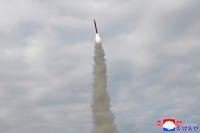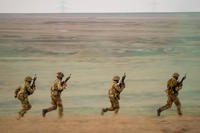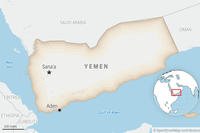The U.S. Army's chief of staff told Congress on Tuesday that the service is making significant investments in future camouflage technology designed to mask heat signatures given off by soldiers and vehicles, a feature that will hide them from enemy sensors.
Chief of Staff Gen. Mark Milley and Army Secretary Mark Esper testified Tuesday before the House Appropriations Committee's defense subcommittee on the service's proposed fiscal 2020 budget request.
Rep. Hal Rogers, R-Kentucky, wanted to know more about what the service is doing to develop Advanced Camouflage Technology, a capability he characterized as critical to the Army's success in a conflict with a near-peer adversary.
"It's not as glamorous as the Next Generation Combat Vehicle or Abrams tank upgrades ... but can you talk about the importance of advanced camouflage and concealment technologies, especially in a combat environment where we don't necessarily have dominance in the air ... and we are not able to operate out of fixed operating bases?" Rogers asked.
Milley agreed that advanced camouflage technologies will be needed if units are going to survive on the future battlefield, which will be a "highly lethal" environment where "units will be cut off and separated" from one another.
"Advanced camouflage technologies are critical; we are putting a fair amount of money into advanced camouflage systems, both individual, unit, vehicle, etc.," he said.
While he didn't say how much research money is budgeted, it will fall under the service's air and missile defense modernization priority, Milley said.
Future camouflage will have to hide the heat and electromagnetic signatures that humans, vehicles and other systems put out, he added.
"We know that adversary [target] acquisition systems are very, very capable in that, if you can see a target with precision munitions, ... you can hit a target," Milley said. "So camouflage systems that break up electronic signatures and break up heat signatures are critical."
-- Matthew Cox can be reached at matthew.cox@military.com.















